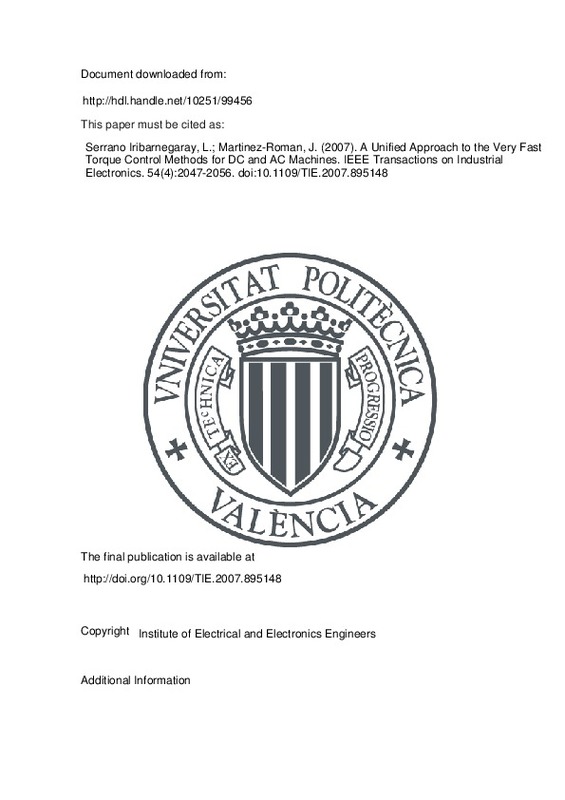JavaScript is disabled for your browser. Some features of this site may not work without it.
Buscar en RiuNet
Listar
Mi cuenta
Estadísticas
Ayuda RiuNet
Admin. UPV
A Unified Approach to the Very Fast Torque Control Methods for DC and AC Machines
Mostrar el registro completo del ítem
Serrano Iribarnegaray, L.; Martinez-Roman, J. (2007). A Unified Approach to the Very Fast Torque Control Methods for DC and AC Machines. IEEE Transactions on Industrial Electronics. 54(4):2047-2056. doi:10.1109/TIE.2007.895148
Por favor, use este identificador para citar o enlazar este ítem: http://hdl.handle.net/10251/99456
Ficheros en el ítem
Metadatos del ítem
| Título: | A Unified Approach to the Very Fast Torque Control Methods for DC and AC Machines | |
| Autor: | ||
| Entidad UPV: |
|
|
| Fecha difusión: |
|
|
| Resumen: |
[EN] The general strategy to get a very fast torque control in a dc or ac machine is based on keeping the pulsational electromotive forces (EMFs) of all of its phases as small as possible during the transient states and ...[+]
|
|
| Palabras clave: |
|
|
| Derechos de uso: | Reserva de todos los derechos | |
| Fuente: |
|
|
| DOI: |
|
|
| Editorial: |
|
|
| Versión del editor: | http://doi.org/10.1109/TIE.2007.895148 | |
| Descripción: |
|
|
| Tipo: |
|







![[Cerrado]](/themes/UPV/images/candado.png)


